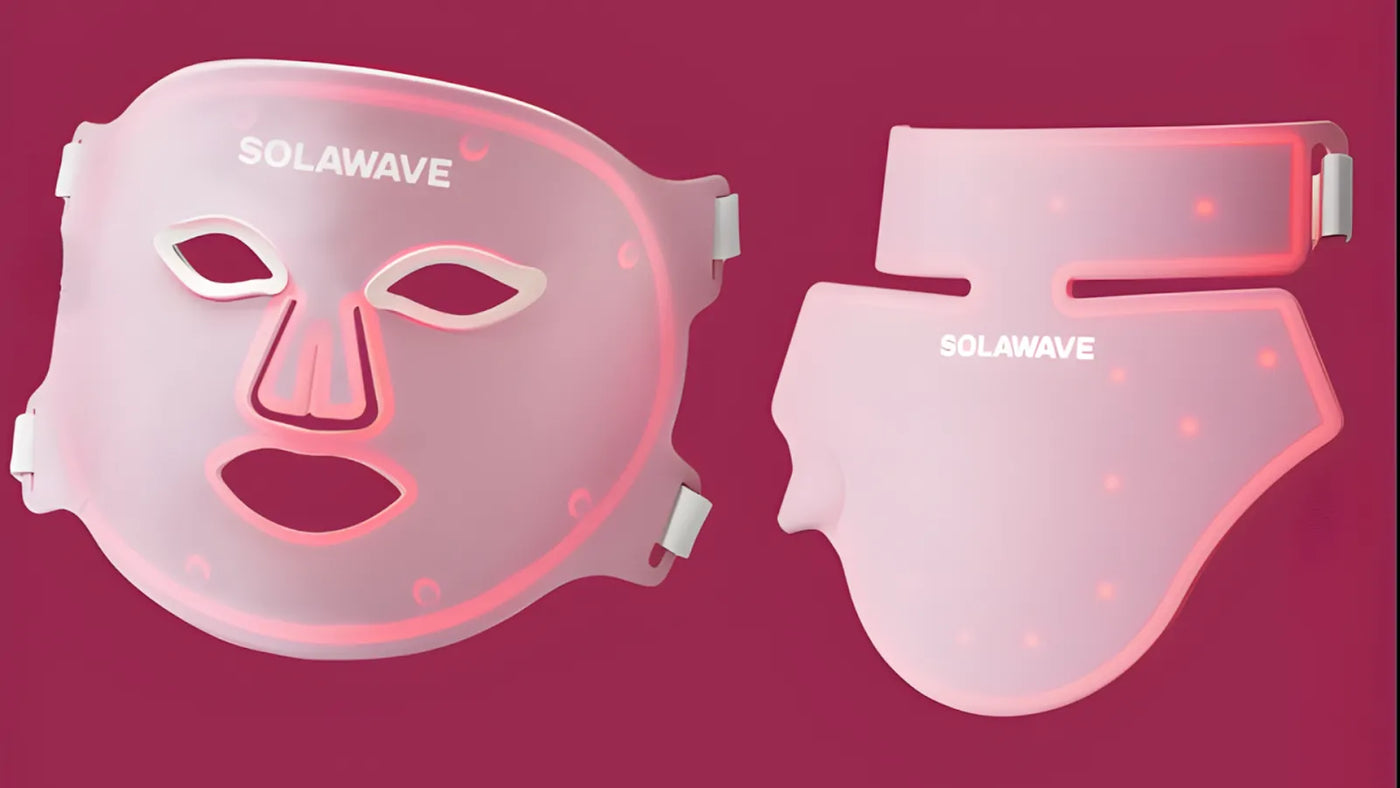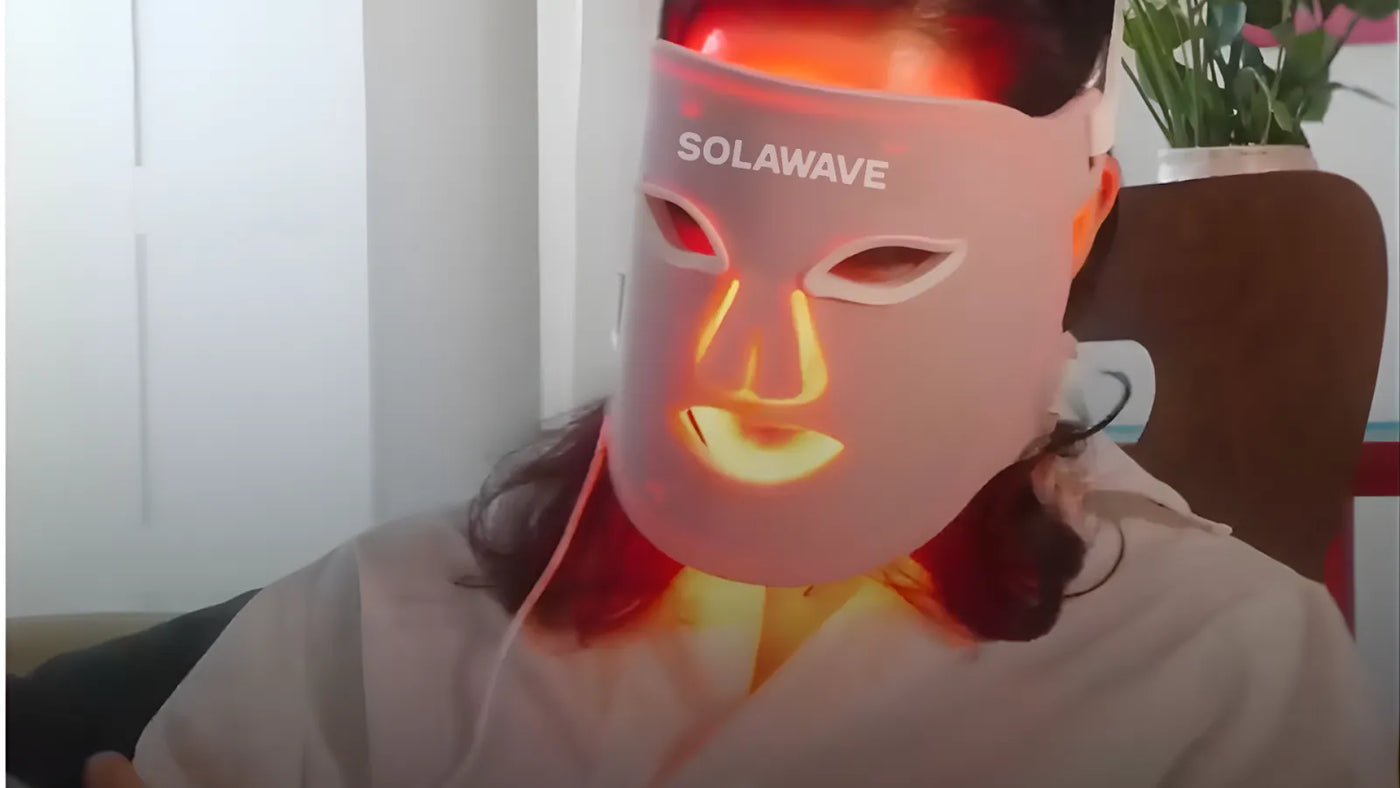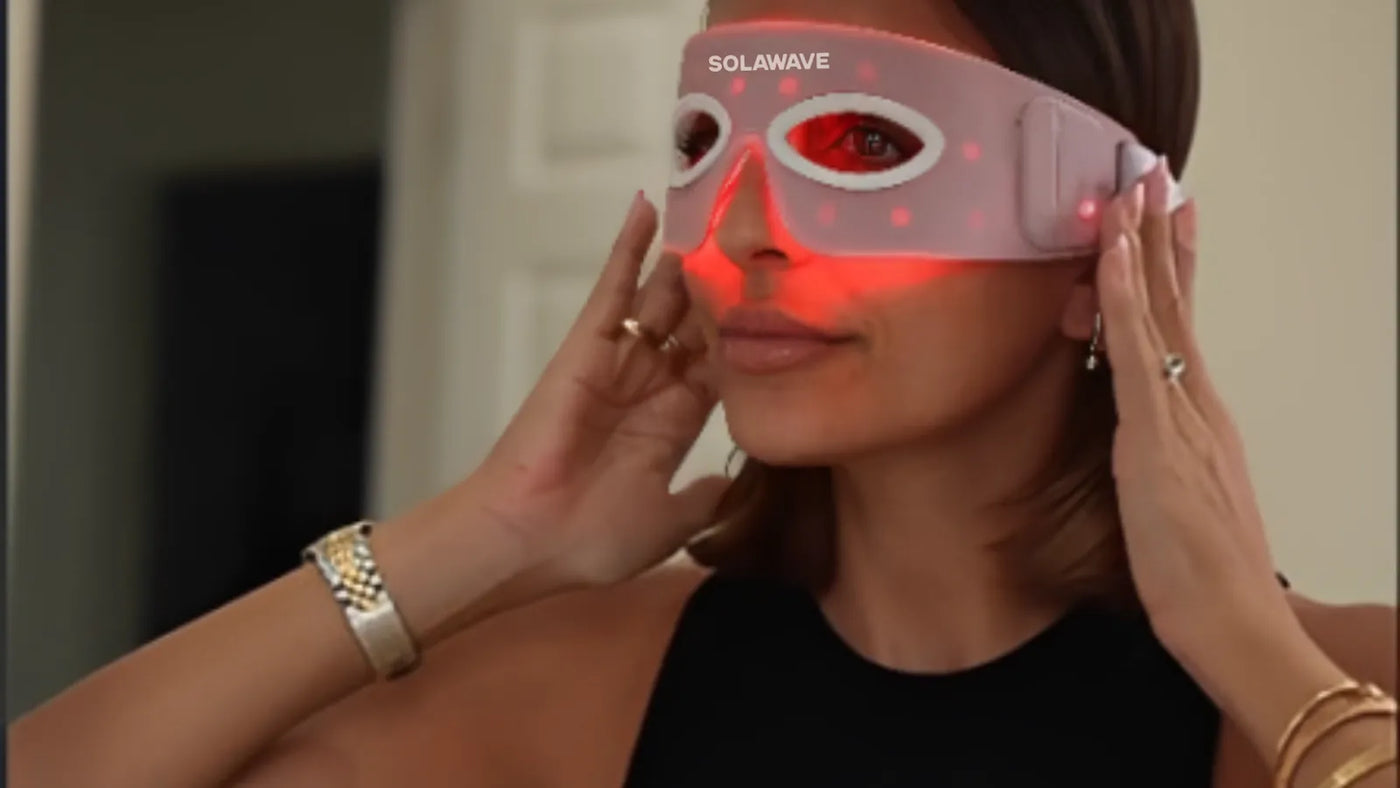

Red Light Therapy for Eczema: What To Know
Red light therapy has become increasingly popular in the world of skincare, often praised for its potential to improve the appearance of your skin and reduce visible signs of aging. Many people are curious about whether this technology can help with various skin conditions, including eczema. However, it’s important to understand right off the get-go that red light therapy is not a solution for eczema.
This article aims to clear up common misconceptions about red light therapy and eczema. You’ll learn what eczema is, what causes it, and which treatments are actually proven to help.
What Is Eczema?
Eczema is a common skin condition that causes your skin to become dry, itchy, and inflamed. It’s not just a single disease, but rather a group of conditions that result in irritated skin. Living with eczema can be challenging, as symptoms like redness, swelling, and persistent itching often interfere with your daily comfort and sleep.
There are several types of eczema, with atopic dermatitis being the most common. Atopic dermatitis usually starts in childhood and can continue into adulthood. Other types include contact dermatitis, which happens when your skin reacts to something it touches, and dyshidrotic eczema, which causes small, itchy blisters on your hands and feet. Each type has its own triggers and patterns, but all share the hallmark symptoms of irritation and discomfort.
The exact cause of eczema isn’t fully understood, but it’s believed to result from a combination of genetic, environmental, and immune system factors. If you have a family history of eczema, asthma, or allergies, you’re more likely to develop it yourself. Environmental triggers — such as harsh soaps, certain fabrics, stress, or changes in weather — can make symptoms worse. Additionally, your immune system may overreact to minor irritants or allergens, leading to inflammation and flare-ups.
Red Light Therapy: What It Really Does
Red light therapy, also known as photobiomodulation, uses specific wavelengths of light to interact with your skin at a cellular level. This technology was first explored by NASA in the 199s for wound healing in space, and it has since become popular in the skincare industry for its aesthetic benefits. Devices that use medical-grade LEDs deliver red and near-infrared light, which penetrate the skin to support natural biological processes.
The main proven benefits of red light therapy are cosmetic. Regular use can help reduce the appearance of fine lines and wrinkles, improve skin texture, and support collagen and elastin production. As collagen naturally declines with age, red light therapy can help your skin appear firmer, smoother, and more youthful over time. Many users notice visible improvements in their skin’s brightness and firmness after several weeks of consistent use.
However, it’s important to be clear: there is no scientific evidence that red light therapy can treat, cure, or improve eczema. While red light therapy may support your skin’s overall appearance, it does not address the underlying causes or symptoms of eczema. For any medical condition, including eczema, you should rely on evidence-based treatments and consult with a healthcare professional for guidance. Focusing on proven therapies ensures you get the safest and most effective care for your skin.
What Actually Helps with Eczema?
When it comes to managing eczema, focus on treatments that are supported by strong scientific evidence. While there is no cure for eczema, many people find significant relief by following a comprehensive care plan tailored to their specific needs.
Here’s what actually helps with eczema:
Moisturizers and Emollients
The foundation of eczema care is keeping your skin well-hydrated. Moisturizers and emollients form a protective barrier over your skin, locking in moisture and helping to prevent dryness and irritation. You should apply a fragrance-free, gentle moisturizer several times a day, especially after bathing, to maintain your skin’s natural barrier. Ointments and creams are generally more effective than lotions, as they provide a thicker, longer-lasting layer of protection.
Prescription Creams
For many people, over-the-counter moisturizers aren’t enough to control eczema flare-ups. Prescription creams, especially topical corticosteroids, are often recommended to reduce inflammation and itching. These medications work by calming your immune system’s response in the affected areas. It’s important to use these creams exactly as directed by your healthcare provider, as overuse can lead to side effects such as thinning of the skin.
Other prescription options include topical calcineurin inhibitors, which help control inflammation without the risks associated with steroids. These may be recommended for sensitive areas like the face or for long-term use when steroids aren’t suitable.
Lifestyle Changes
Managing eczema often requires making changes to your daily routine and environment. Identifying and avoiding your personal triggers — such as certain soaps, detergents, fabrics, or foods — can make a big difference in reducing flare-ups.
Gentle skincare routines can also help: use mild, fragrance-free cleansers, avoid hot showers, and pat your skin dry instead of rubbing.
Stress is another common trigger for eczema. Practicing stress-reduction techniques like mindfulness, meditation, or gentle exercise can help you manage both your mental well-being and your skin health.
Medications for Severe Cases
If your eczema is severe or doesn’t respond to topical treatments, your doctor may recommend additional medications. These can include oral immunosuppressants, which help control your immune system’s activity, or biologic drugs, which target specific pathways involved in inflammation. These treatments are typically reserved for people with moderate to severe eczema who haven’t found relief with other options.
Biologics, such as dupilumab, have shown promising results in reducing symptoms and improving quality of life for people with difficult-to-treat eczema. However, these medications require close monitoring by a healthcare professional due to potential side effects.
The Importance of Professional Guidance
Eczema is a complex condition that affects everyone differently. What works for one person may not work for another, which is why it’s so important to consult a healthcare professional for a personalized treatment plan. Your doctor or dermatologist can help you identify triggers, choose the right medications, and adjust your routine as needed to keep your symptoms under control.
Ongoing Research and Emerging Therapies
Researchers are continually exploring new ways to treat eczema and improve the lives of those affected by it. Recent advances include new topical medications, innovative biologic therapies, and a deeper understanding of the role of the skin’s microbiome in eczema. While these emerging treatments are promising, it’s important to rely on therapies that have been thoroughly tested and approved by medical authorities.
In summary, managing eczema requires a combination of proven treatments, lifestyle adjustments, and professional support. Focus on evidence-based care and staying informed about new developments, and you can take control of your symptoms and improve your skin health over time.
Frequently Asked Questions About Red Light Therapy and Eczema
Can red light therapy make eczema worse? For most people, red light therapy is considered safe and non-invasive when used as directed. However, everyone’s skin is different, and some individuals with eczema may experience irritation or increased sensitivity when exposed to certain light wavelengths. If you have eczema and are considering red light therapy for any reason, do a patch test on a small area of skin first. If you notice any redness, itching, or worsening of your symptoms, discontinue use and consult your healthcare provider.
Are there any risks to using red light therapy if you have eczema? Red light therapy devices are generally safe, but there are a few considerations if you have eczema. Using the device on broken or severely inflamed skin can potentially cause discomfort or irritation. Additionally, some people may be sensitive to light or heat, which could trigger a flare-up. Always follow the manufacturer’s instructions and speak with your dermatologist before starting any new skincare device, especially if you have active eczema lesions.
Why do some people believe red light therapy helps with eczema? Some people believe red light therapy can help with eczema because it is known to support skin health and reduce inflammation in other contexts, such as for acne and or improving signs of skin aging. However, these effects are not supported by robust scientific studies, and red light therapy has not been proven to treat or cure eczema.
Conclusion
Red light therapy may offer aesthetic benefits for your skin, such as reducing signs of aging and improving overall skin tone, but it is not a treatment for eczema. If you’re living with eczema, focus on proven, evidence-based therapies and to work closely with a healthcare professional and/or dermatologist to find what works best for you. Always rely on science-backed information when making decisions about your skin health, and don’t be swayed by unproven claims. Your well-being is best supported by treatments that are safe, effective, and recommended by medical experts.
Disclaimer: This article is intended for informational purposes only, and should not be interpreted as medical advice or guidance. Always seek medical advice and care from a trusted healthcare professional.
Sources:





















